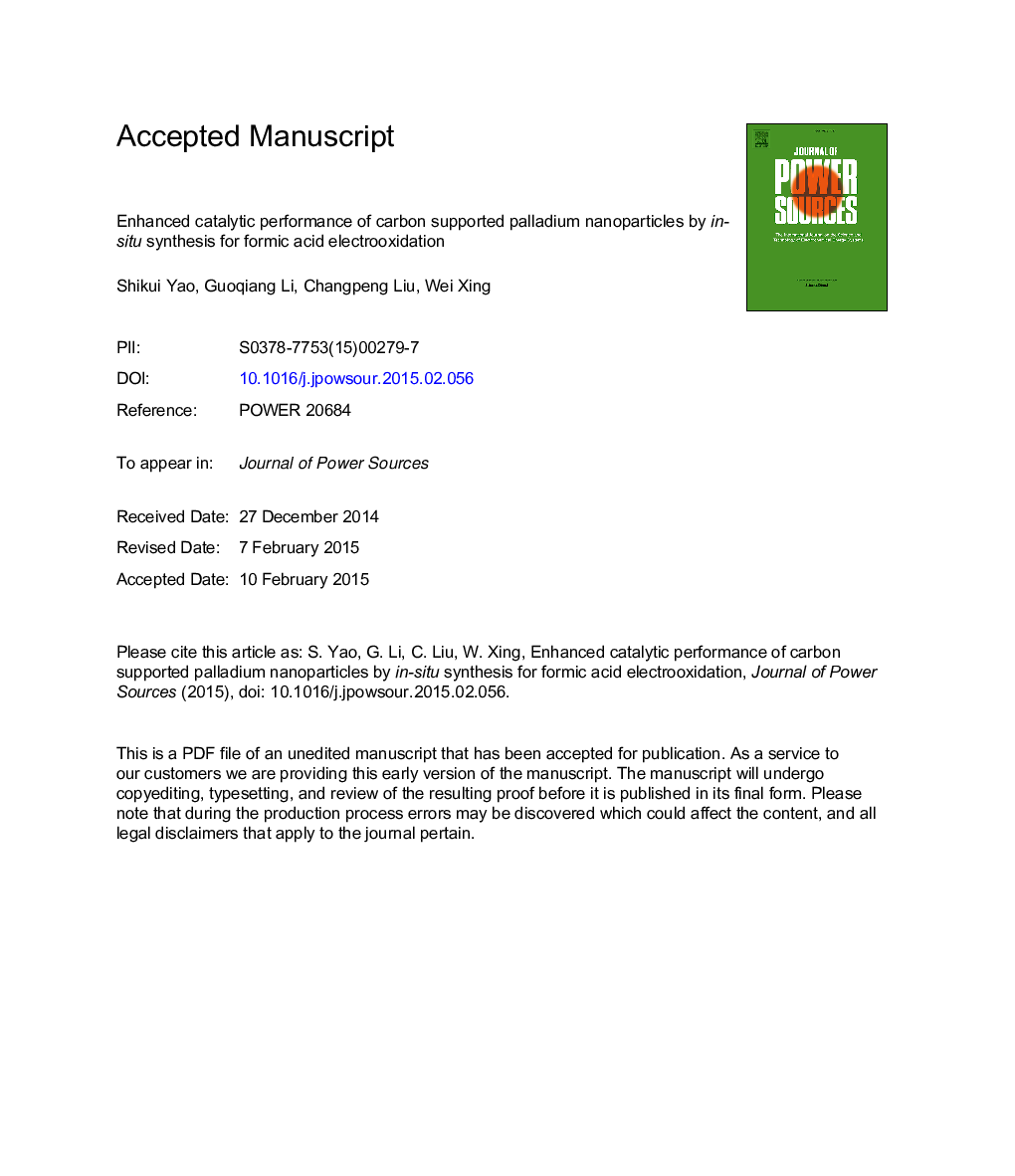| Article ID | Journal | Published Year | Pages | File Type |
|---|---|---|---|---|
| 7732580 | Journal of Power Sources | 2015 | 28 Pages |
Abstract
The development of facile, surfactant-free strategy for the scale-up production of catalysts with superior performance for energy science is an interesting challenge. Pd/C is synthesized using an in-situ method from PdO/C for formic acid electrooxidation based on the reducibility of formic acid. The morphology, composition and electrocatalytic properties are investigated using transmission electronmicroscopy, X-ray diffraction, X-ray photoelectron spectroscopy, linear scan voltammograms (LSV) and chronoamperometry. The in-situ synthesized Pd nanoparticles show better distribution and smaller average particle size than the normally synthesized Pd/C, which indicates that the well-known Ostwald ripening is most limited in the synthesis process. The electrochemical measurements show that the Pd/C catalyst exhibits enhanced performance towards formic acid electrooxidation. For example, the peak current of the Pd/C catalyst is approximately three times that of the homemade Pd/C catalyst and twice as high as that of the commercial Pd/C catalyst in the LSV test. The in-situ synthesized Pd/C catalyst has potential application for direct formic acid fuel cells, and the in-situ route should be an effective strategy to synthesize high performance catalysts.
Keywords
Related Topics
Physical Sciences and Engineering
Chemistry
Electrochemistry
Authors
Shikui Yao, Guoqiang Li, Changpeng Liu, Wei Xing,
